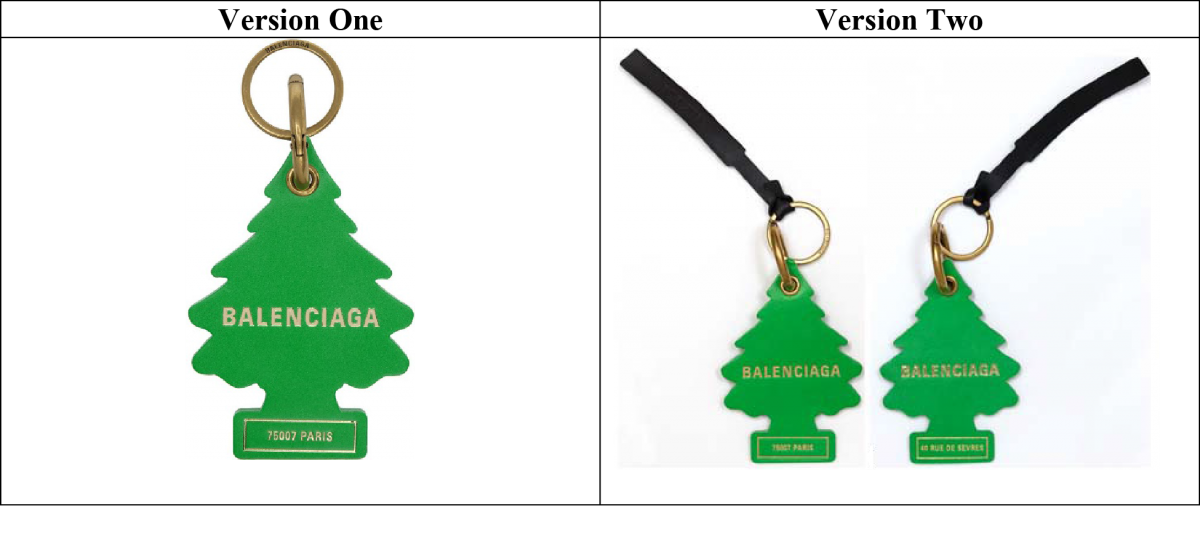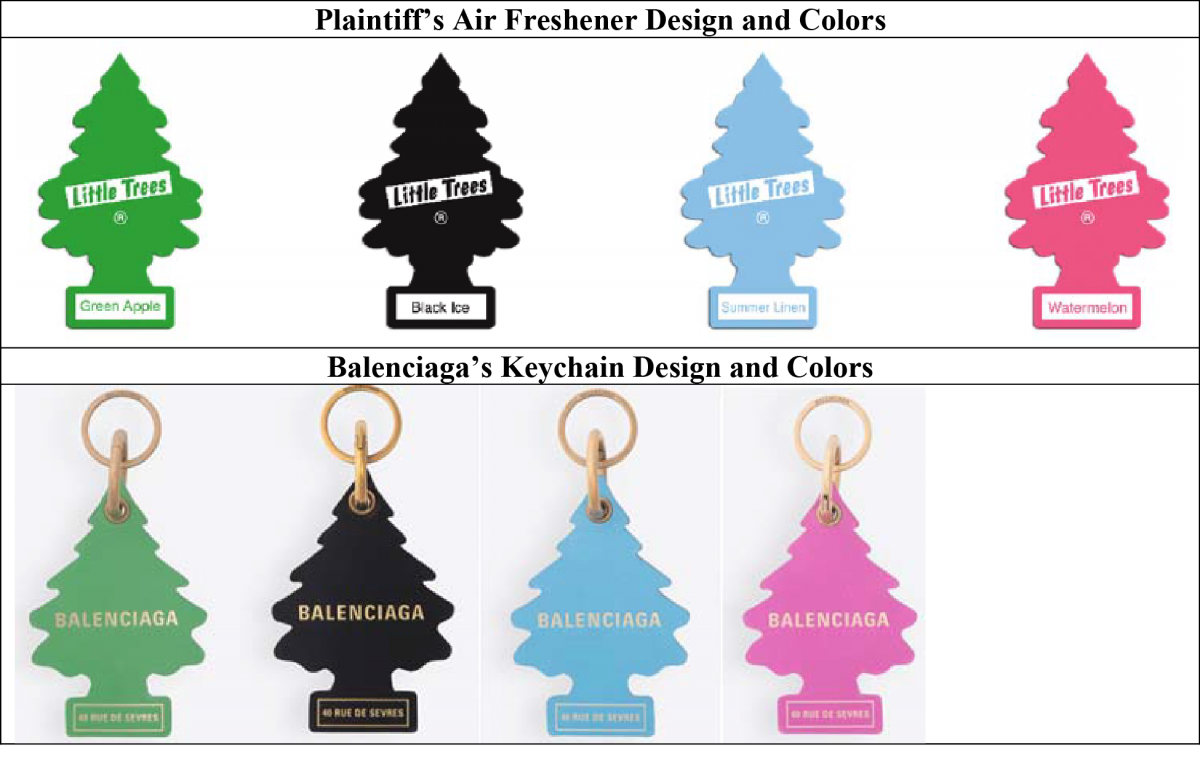
BALENCIAGA IS NOT OUT OF THE WOODS—LITTLE TREES AIR FRESHNERS ARE AT THE CENTER OF A TRADEMARK INFRINGEMENT SUIT
On October 19, 2018 plaintiffs CAR-FRESHNER Corporation (“CFC”) and Julius Sämann Ltd (“JSL”) filed suit against Balenciaga America, Inc. for alleged trademark infringement, false designation of origin, trademark dilution, and unfair competition, under the Lanham Act and corresponding New York state law. Plaintiffs claim exclusive trademark rights in the LITTLE TREES air fresheners design in connection with a variety of goods, including key rings. Balenciaga offered for sale and sold leather key rings in the shape of a tree. Examples of Plaintiffs’ key ring and Balenciaga’s key ring, are below:

Plaintiff JSL owns five incontestable federal trademark registrations for the LITTLE TREES air fresheners (“LITTLE TREES Marks”) for a variety of goods, including air fresheners, shirts, hats, pens, stickers, and luggage tags:

CFC is the exclusive licensee of JSL’s trademarks for air fresheners in the United States.
Plaintiffs claim JSL and its predecessors and CFC and its predecessors have used trademarks and corporate identifiers incorporating the LITTLE TREES Marks in connection with manufacturing, marketing, and selling various products since at least 1952. Plaintiffs state that over the last 60 years the public has associated the LITTLE TREES Marks primarily with car fresheners, but also associates the marks with a variety of other goods. In the complaint, Plaintiffs provided examples of their use of the LITTLE TREES Marks in connection with a variety of goods, including luggage tags, key rings, playing cars, greeting cards, shirts, backpacks and duffle bags, pens, stickers, umbrellas, clocks and watches, downloadable computer graphics, toys, magnets, water bottles, and more.
Some examples of these items include:

Balenciaga designs, manufactures, and markets apparel and accessories for men, women, and children. Balenciaga offered for sale and sold leather key rings in multiple colors. Below are images of two versions of Balenciaga’s keychain:

Plaintiffs’ complaint included a screenshot of Balenciaga’s website offering the keychain, which includes a statement reading, “Car fresheners inspiration.” Plaintiffs argue Balenciaga’s statement supports the conclusion that Balenciaga took its inspiration for its keychains from Plaintiffs’ products. Plaintiffs also claim Balenciaga’s Version Two keychain copies the exact contours of the LITTLE TREES Marks. Further, Plaintiffs claim Balenciaga’s keychain copies the specific colors associated with some of Plaintiffs’ most popular LITTLE TREES air freshener products:

At the time of publication, Balenciaga has not filed a response to the complaint.
In their pleadings, Plaintiffs identify several third-party licensees of its LITTLE TREES Marks, including Buffalo Wild Wings, Inc., Pactiv Corporation, Nestle Purina PetCare Company, Utah First Credit Union, Discover Financial Services, Brooks Sports, Kia Motors America, Inc., A&E Networks, LLC, and Capitol One. In addition, Plaintiffs state that they have recently licensed the LITTLE TREE Marks to designer Anya Hindmarch, for use in connection with hang tags for handbags. Anya Hindmarch’s and Balenciaga’s handbags both retail for thousands of dollars.
In view of their robust licensing program, Plaintiffs demonstrate the value and public recognition of their LITTLE TREES Marks. To protect the value of their marks, Plaintiffs and all trademark owners must enforce their intellectual property rights against others attempting to use the marks without authorization. Failure to do so may jeopardize not only the trademark owner’s ability to stop other third-parties in the future, but also its ability to generate revenue from a licensing program.
For designers, this case demonstrates the importance of researching whether a third-party may have intellectual property rights in specific trademarks, colors, and/or designs. Although it is common for designers to seek inspiration from a variety of sources, designers should also get into the habit of running new designs by legal counsel early in the process to ensure they are not barking up the wrong tree.
Editor: Catherine Holland
